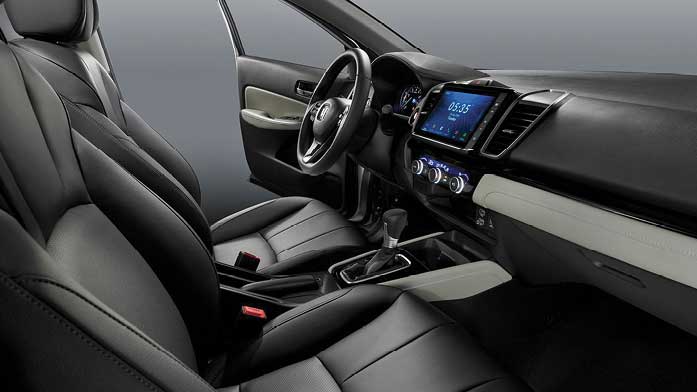AT THE WHEEL

CELEBRITY FASHION
February 24, 2020
FAST TRACK
February 24, 2020SUZUKI JIMNY
OFF-ROAD DRIVING FUN
Mat Ranasinghe writes that the new Jimny returns retro cool to the SUV that took Suzuki into the 4WD world

MODEL
This is a new model from a brand that has redefined the Kei car segment over and over again. Jimny has been an eagerly anticipated small SUV and we took one to a Japanese mud party to see what all the hype is about.
ENGINES
660cc R06A 3-cylinder turbocharged petrol for Japan or 1.5-litre K15B 6-cylinder naturally aspirated (NA) petrol.
The small Jimny SUV introduced Suzuki to the world of four-wheel drives way back in the 1970s and again in the early ’80s. And while its Series III didn’t bask in the same glory, all signs point to Series IV being a winner yet again.
After Suzuki acquired the Hope Motor Company in the late 1960s, it decided to introduce a capable off-road Kei car – ‘Kei car’ is a term used in Japan for micro motorcars that attracted government incentives such as lower taxes based on smaller sizes and emissions. The Suzuki LJ (Light Jeep) 10 was introduced in 1970; and for all intents and purposes, it was Japan’s first Kei 4WD.
The first model was powered by a tiny 359cc two-stroke 2-cylinder air-cooled engine putting out around 25bhp. And by keeping the engine capacity under 360cc and its length under three metres, it fulfilled the requirements for Kei cars at the time – although Suzuki had to mount the spare wheel inside the cabin, which meant the vehicle didn’t have the capacity to accommodate a fourth passenger and ended up as a three-seater.
As for speed, the LJ10 could reach a maximum 75 kmph. In 1972, Suzuki upgraded its LJ10 with the LJ20 where the horizontal grille slats were replaced with vertical slats and the engine with a water-cooled unit producing 28bhp. And the top speed increased to 80 kmph.
A special version had the spare wheel mounted behind the passenger seat, allowing two smaller seats (facing each other) to be installed in the rear. A left-hand drive model and hardtop van were produced for the US market – this model had the spare wheel mounted on the outside rear.
September 1975 saw the introduction of the SJ10 and towards the end of production came the SJ20. The SJ30 was released in 1981 and produced for many markets around the world under different names – including Suzuki Sierra, Suzuki Potohar, Suzuki Caribian, Suzuki Katana, Holden Drover and finally, Maruti Gypsy in later years.The third generation introduced in 1998 was sold worldwide but wasn’t as popular as Series I and II.
In the motoring community, the design has been likened to an illegitimate child born of a union between a Mercedes-Benz G-Wagen and Land Rover Defender. But we feel it has a charm of its own, no doubt connecting it with design cues to Series I, II and III. The shape is boxy and reminiscent of the original LJ10.
For the Japanese market, the body remains within its boundaries while in overseas versions, fender flares and bumpers protrude they give the Jimny a more masculine aesthetic. The fender creases on our test car are moulded into the body panels to mimic flares. Export vehicles have bumper extensions and rubberised flares, which widen the body to give it a tougher stance. The rounded headlamps with high-tech LEDs tie back to those in the old LJ10.
Series IV has a floor mounted lever for the four-wheel drive system. Previously, the system was controlled through dashboard mounted buttons. Compared to many of today’s crossovers and SUVs, the Jimny is equipped with a proper 4WD system including a low range transfer case. And that’s in spite of its compact dimensions of only 3.6 metres (length) by 1.6 metres (width) and 1.7 metres (height).
For our test drive, we were mostly on tarmac; and the Jimny’s ride and on road performance were rather lacklustre. It rolled and bumped considerably, on the perfectly sealed and twisty roads around the foot of Mount Fuji.
To our surprise however, a wrong turn into a farm with muddy broken tracks brought out the Jimny’s latent talent. Chassis articulation was fantastic, thanks to its rigid axles perhaps. Even with two wheels off the ground, the Jimny didn’t lose its grip on the loose surface – something we would expect from a Defender or Jeep Wrangler.
After selling nearly three million vehicles since its launch in 1970, Suzuki had some serious shoes to fill. It’s done a great job developing the next evolution of a legend, which is young, cool and retro while being abundantly capable off-road.
So all things considered, it’s on road manners are acceptable at best.







